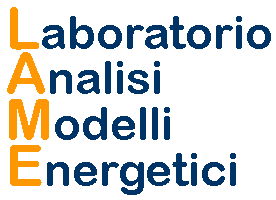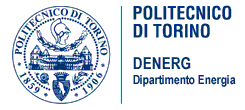
REACCESS:
Risk
of
Energy
Availability:
Common
Corridors
for
Europe
Supply
Security (from 2008 to 2011)
DESCRIPTION OF THE PROJECT
The project, funded under FP7, has been proposed and co-ordinated by Prof. Evasio Lavagno. The project received a total of more than 3MEuro and was carried out by 11 partners. The main goal of the project has been to build tools suitable for EU27 energy import scenario analyses, able to take into account at the same time the technical, economical and environmental aspects of the main energy corridors, for all energy commodities and infrastructures. Import increasingly contributes to energy consumption of EU27. According to the commonly accepted energy outlooks in 2030, about 70% of the European energy needs will be met by primary (and non renewable) sources originating from foreign areas, some of which are very remote and geopolitically unstable. The main present and future “captive” and “open sea” corridors for primary and secondary energy supply to the EU 27 MS plus Norway, Switzerland and Iceland and Balkan Region Countries were identified. Their technical, economical and environmental features were collected into Data Base associated to a Geographical Information System. The commodities taken into consideration for the energy corridor assessment were: oil, natural gas, coal, biomass, HVDC electricity , nuclear and hydrogen. These energy corridors and their attributes were implemented into multi-regional modelling tools - based on adapted versions of ETSAP-TIMES approaches (panEU27++ and TIAM TIMES models) - describing the energy systems and the energy commodities’ trade of European and extra-European Countries/Regions. In particular, the new REACCESS CORridor model (RECOR) was developed to represent in detail the status and possible future developments of the ‘energy corridors’ system bringing energy from suppliers to consumers, maintaining and valorising also the spatial characteristics of the commodity routes. One of the main innovation of the new REACCESS methodology is the insertion of security indicators into the model, in order to build the least risky scenarios ex-ante. The approach of scenario building was generalised, in order to explore trade-offs among different objective function components, such as cost, import corridor risk, technological risk and climate mitigation.
LAME ACTIVITIES
The LAME research group performed a comprehensive job including the necessary co-ordination, the research and the dissemination activities.
The research task was carried out preparing the corridors database including captive and open sea routes, co-operating in implementing these corridors in the existing (although thoroughly updated) modeling tool producing the new RECOR module, and assessing scenarios which included the geopolitical risk reduction for the EU supply.
A GIS based tool was prepared to visualize the considered corridors and the model runs results. The Database prepared (and the RECOR model) represents, in a detailed way, active and planned energy corridors for the main commodities (natural gas, crude oil, refined petroleum products, hard coal, biomass and biofuels, hydrogen, electricity from CSP, and nuclear material) in an excess of 1400 links described.
The activity continued well after the project closure, with fine tuning of the RECOR model and the development of an additional GIS tool with the possibility of representing a new User interface to run the model.
WORK PACKAGES
-
WP1: Project management, scientific co-ordination and Work Package activities integration
-
WP2: Detailed description of the energy Import framework for EU27+
-
WP3: EU security of supply and environment policies vs. energy routes
-
WP4: Modelling EU energy system corridors
-
WP5: Scenario analysis and result reporting
-
WP6: Dissemination and Exploitation Activities

